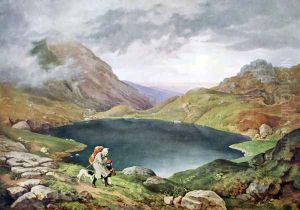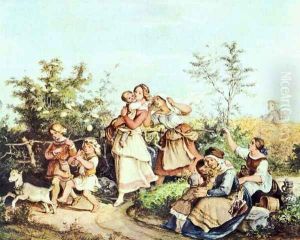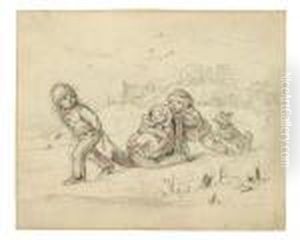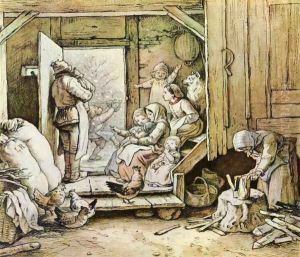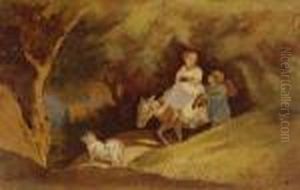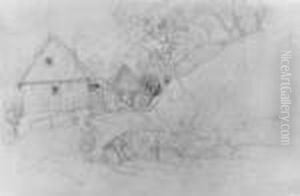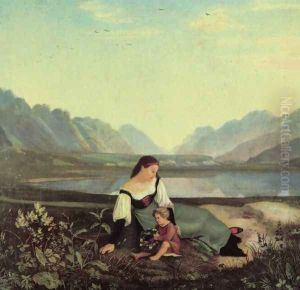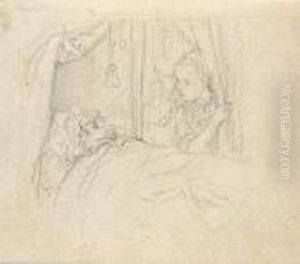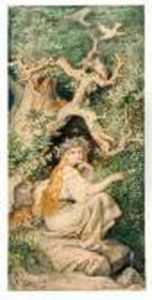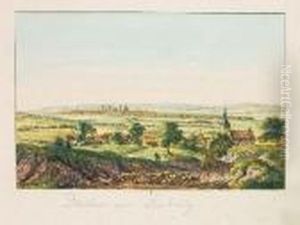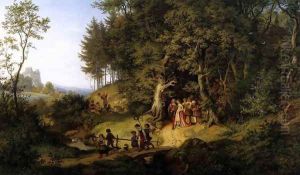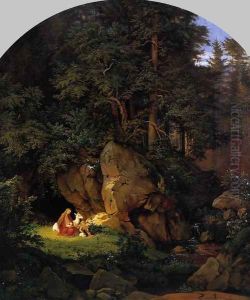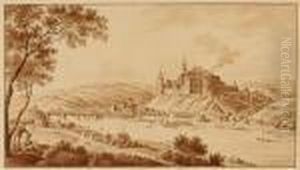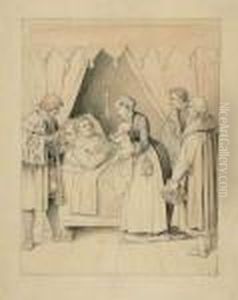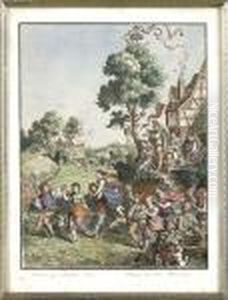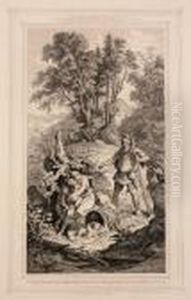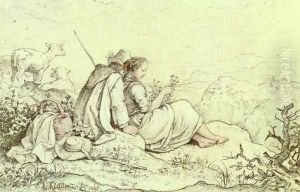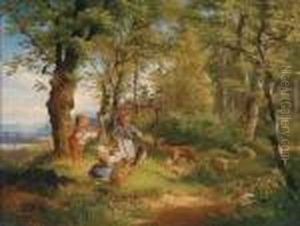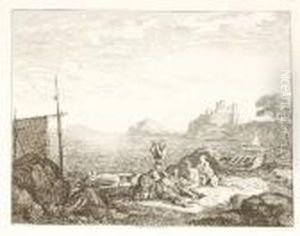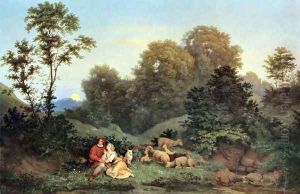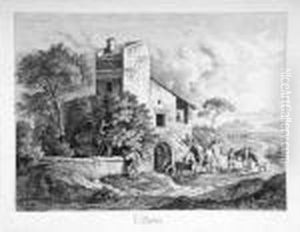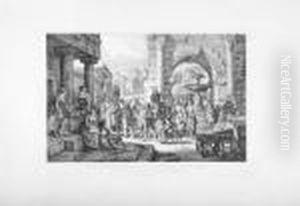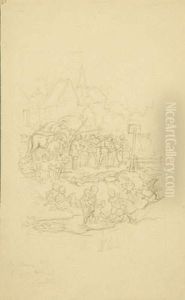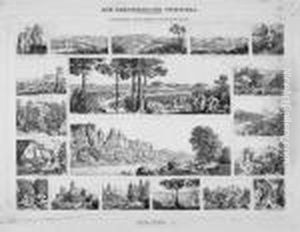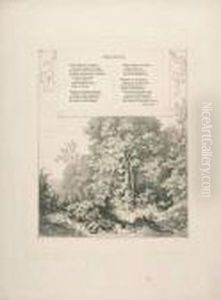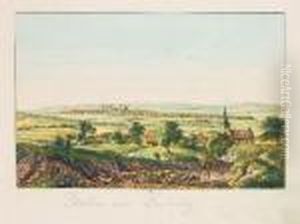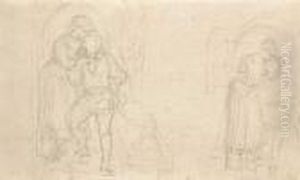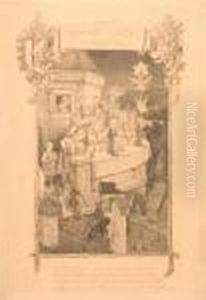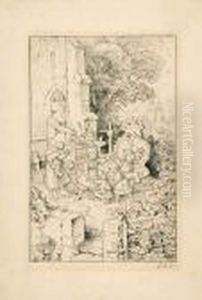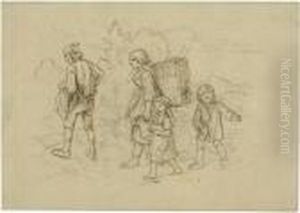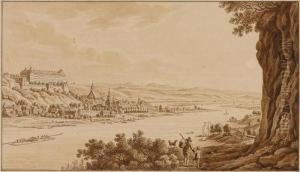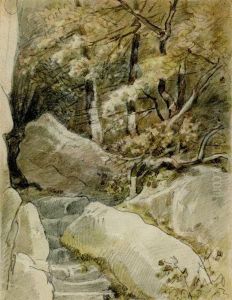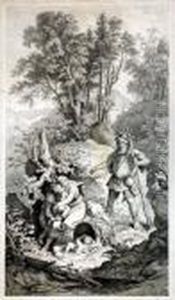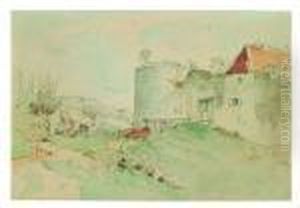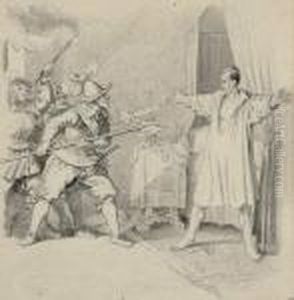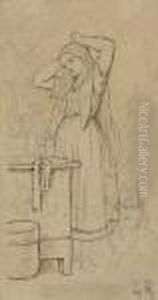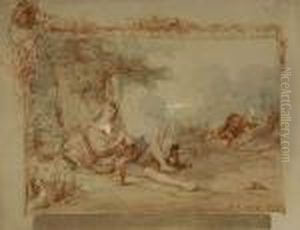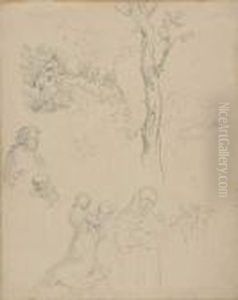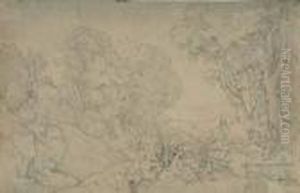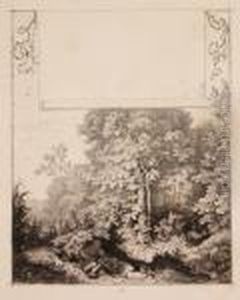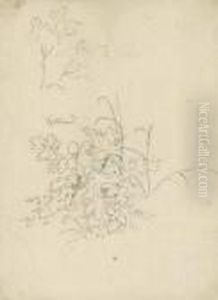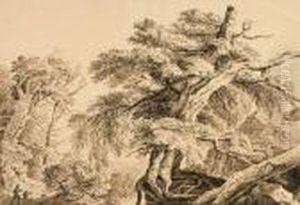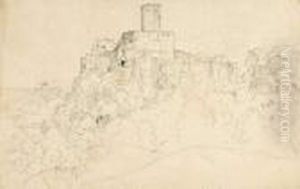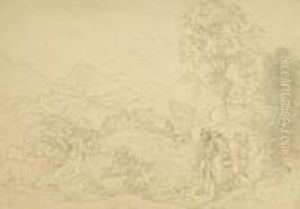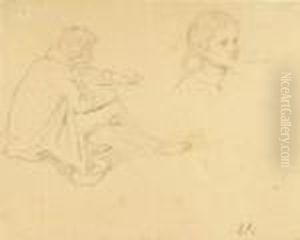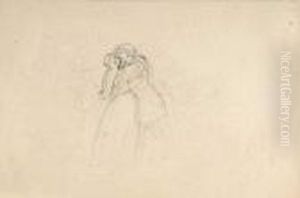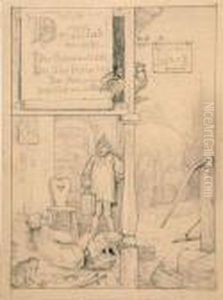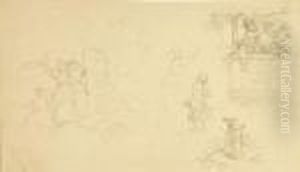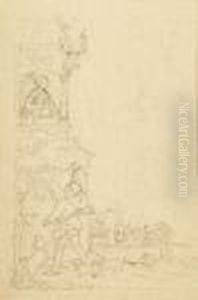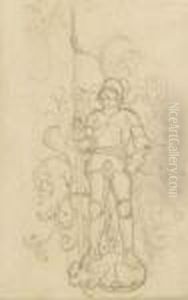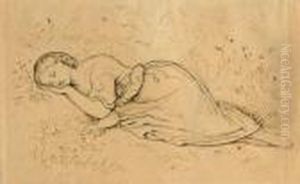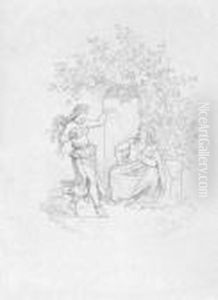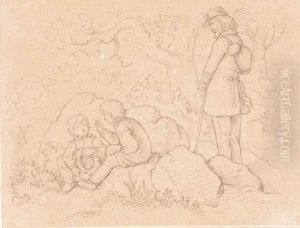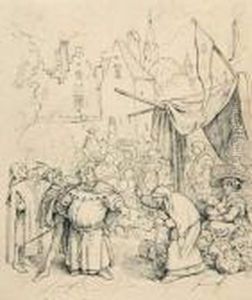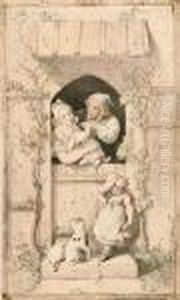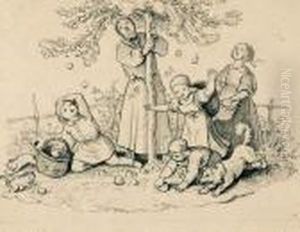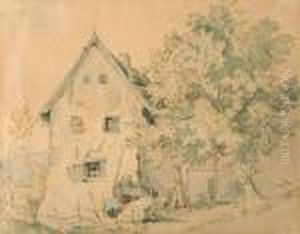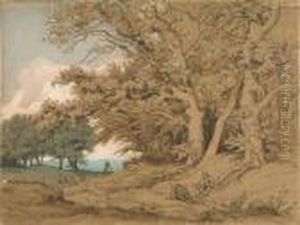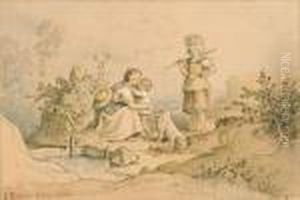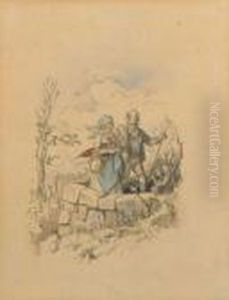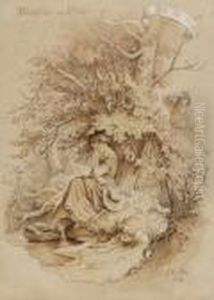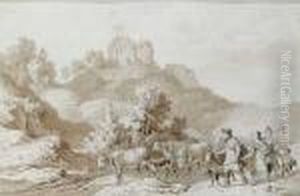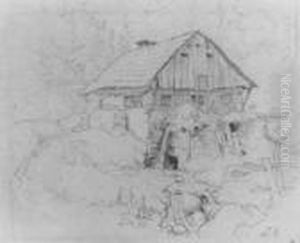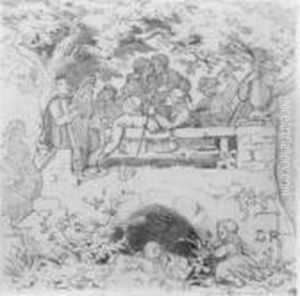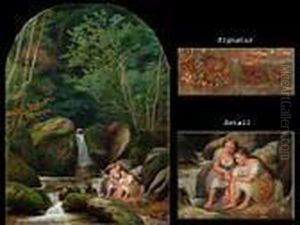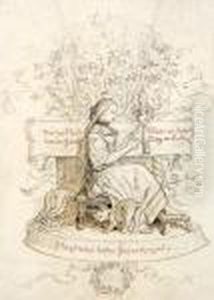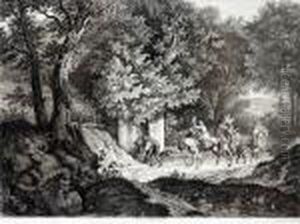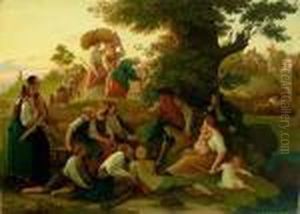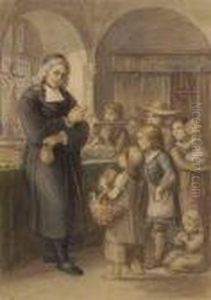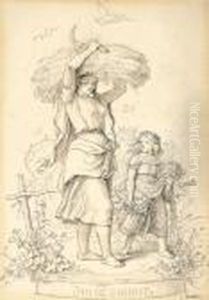Adrian Ludwig Richter Paintings
Adrian Ludwig Richter, often known as simply Ludwig Richter, was a distinguished German painter and etcher, part of the Romantic movement. Born on September 28, 1803, in Dresden, he was the son of Carl August Richter, who was a drawing master and engraver. Ludwig showed an early aptitude for art, and he received his initial training from his father before enrolling at the Dresden Academy of Fine Arts. He further developed his skills under the tutelage of the painter Julius Hübner.
Richter's early work included book illustrations, a field in which he excelled and gained significant recognition. He traveled to Italy in 1823, a trip that greatly influenced his style and thematic choices. During his time in Italy, he immersed himself in the study of nature and the works of Italian masters, which deepened his appreciation for landscapes and genre scenes.
Upon returning to Dresden, Richter was appointed professor at the Dresden Academy in 1836. His teaching career was notable, and he influenced many young artists. As a painter, Richter was renowned for his detailed landscapes and idyllic genre scenes. His works often portrayed the beauty of the Saxon countryside and reflected a serene, harmonious relationship between humans and nature, which was a characteristic theme of the Romantic movement.
Richter became one of the most popular German artists of the 19th century. His engravings and woodcuts were widely distributed, and his illustrations appeared in numerous books, making his work accessible to a broad audience. He also worked on frescoes in several buildings, including the royal palace in Dresden.
Richter's style evolved over his career, showing the influence of various artistic movements, including Classicism and the Nazarenes, a German Romantic art movement seeking to revive honesty and spirituality in Christian art. Despite the changing artistic trends of his time, Richter remained committed to the Romantic ideals throughout his life.
Ludwig Richter's legacy is preserved in the numerous paintings and prints he left behind, as well as in the impact he had on the students he taught during his tenure. He died on June 19, 1884, in Loschwitz, a borough of Dresden, but his work continues to be celebrated for its embodiment of 19th-century Romanticism and its exquisite depiction of the natural world.
